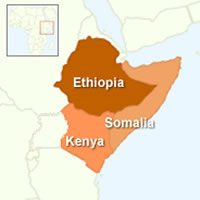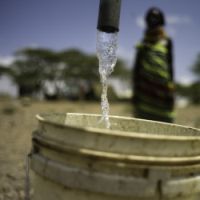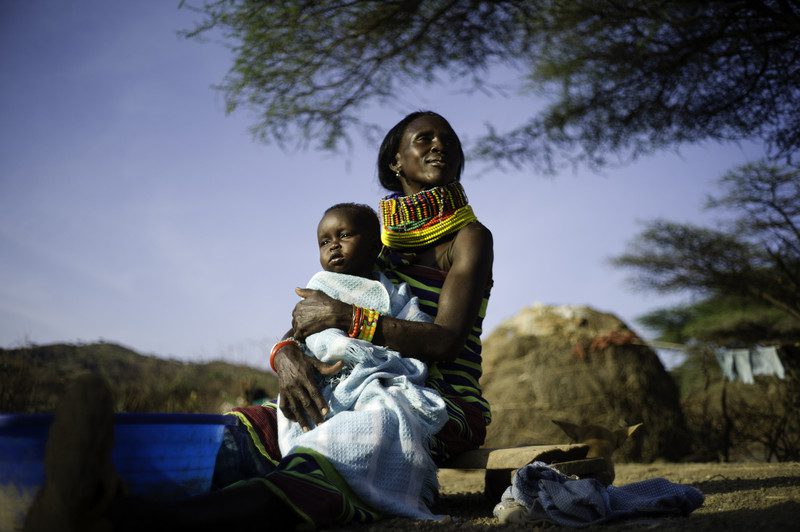East Africa food crisis

The situation
In mid-2011 a major food crisis affecting 13 million people was declared across parts of East Africa. Oxfam launched its largest ever funding appeal in the continent. Livestock died, harvests failed and families’ livelihoods were destroyed.
Although it’s impossible to calculate exactly how many people died as a result of drought, it is estimated that between 50,000 and 100,000 lives were lost between April and August 2011, more than half of them children under the age of five.
Triggered by the poorest rains in 60 years, the crisis is ultimately down to man-made factors such as poor governance, conflict and chronic neglect of remote arid regions. Under-investment in small-scale food producers such as farmers and pastoralists also played a part.
Oxfam reached more than 2.8 million people in Somalia, Kenya and Ethiopia with a mixture of emergency aid, long-term development and prevention, and advocacy to address the root causes of this chronic drought.
Communities need the basic services, infrastructure and skills to ensure their resilience for the future. Rebuilding lives and livelihoods will take a sustained effort for many years to come and several good seasons are required to rebuild herd sizes, improve harvests, and reduce levels of household debt.
Oxfam’s response
Ethiopia
Oxfam assisted nearly 1 million people affected by the crisis in three regions: Somali, Oromiya and Tigray.
We helped communities look for more sustainable sources of water, by drilling boreholes, developing motorised water schemes and improving traditional water harvesting systems. An example of this work is in Dolo Ado, where we constructed four new hand-dug wells which are benefitting more than 10,000 people.
As most people in these areas depend on their livestock for food and livelihoods, we vaccinated and treated more than 1 million heads of livestock. We also ensured that 500,000 heads of cattle had access to water, pasture and medical treatment.

Kenya
Oxfam supported around 1 million people affected by the crisis in Kenya, mainly in the remote northern drylands such as Turkana and Wajir, and the Dadaab refugee camp.
We supported more than 620,000 pastoralists and refugees with essential water, sanitation and hygiene activities as well as desperately needed food distributions, livestock support and cash transfers.
The Dadaab camps are the biggest refugee complex in the world, and home to more than 500,000 refugees who have fled the conflict and famine in Somalia. Despite ongoing insecurity in the area, Oxfam was there, providing clean water, sanitation and health campaigns to around 100,000 refugees.
Somalia
Oxfam reached around 1.3 million people in Somalia, providing life-saving essentials such as clean water, sanitation and grain. We worked through local partners to provide water and sanitation, emergency food security, livelihoods and nutrition intervention to those affected by conflict and drought.
Oxfam partners operate 15 therapeutic feeding centres throughout Mogadishu that provide care for malnourished children and their mothers. These centres treated 150,000 children during the crisis, making it the single largest nutrition program in South Central Somalia.
Though the situation is improving, the fighting in Somalia must end for the population to have any hope of real stabilisation and recovery.
The East Africa food crisis appeal is now closed, but by making a donation to our Africa crisis appeal, you will be helping us support people in need across the continent.
